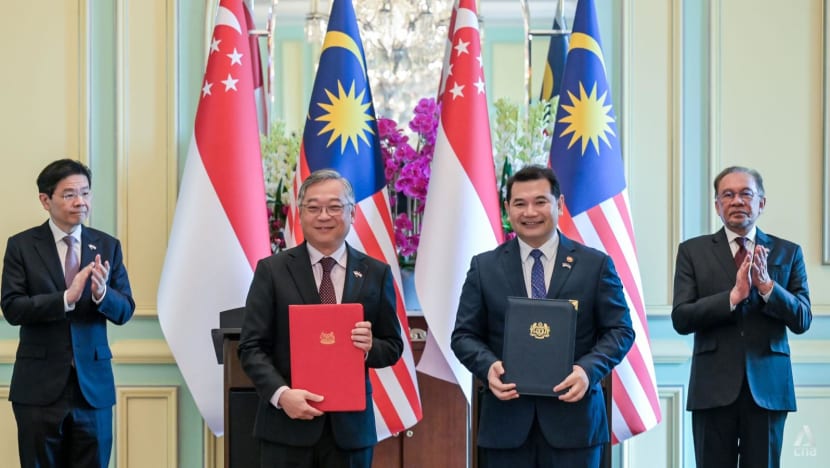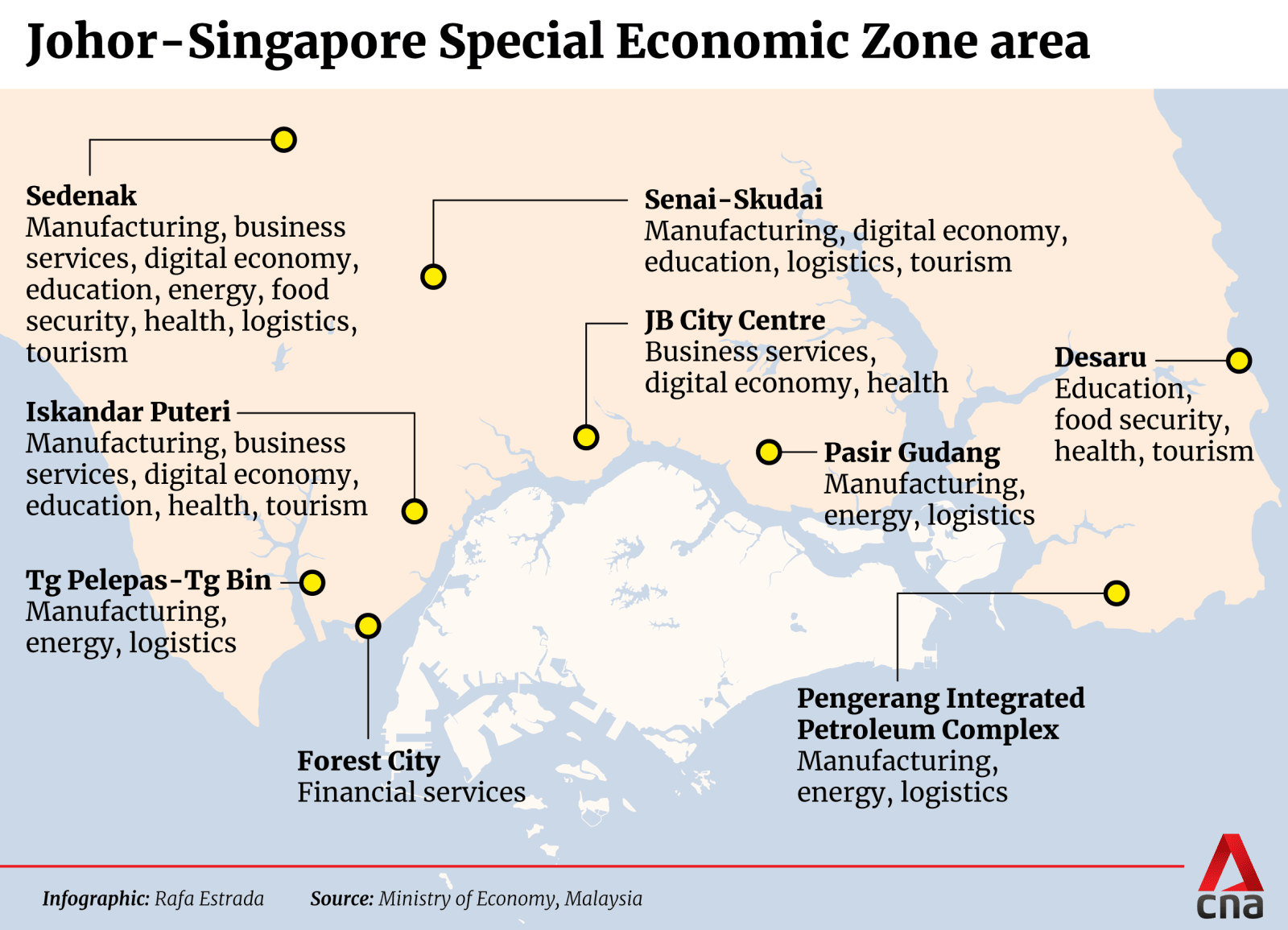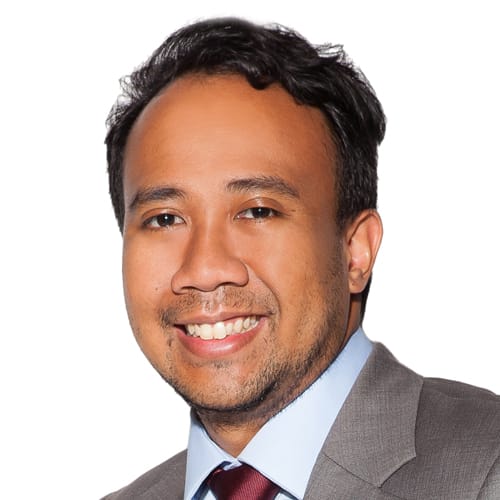Malaysia-Singapore Leaders’ Retreat: New Johor SEZ deal guns for global investments, 20,000 skilled jobs in 5 years
The signed Special Economic Zone agreement was exchanged at the retreat in Putrajaya, witnessed by Malaysia Prime Minister Anwar Ibrahim and Singapore Prime Minister Lawrence Wong.

Exchange of MoU for Johor-Singapore Special Economic Zone between Singapore Deputy Prime Minister Gan Kim Yong and Malaysia's Economy Minister Rafizi Ramli witnessed by both Singapore and Malaysia’s Prime Minister at the Prime Minister’s office. (Photo: CNA/Fadza Ishak)

This audio is generated by an AI tool.
KUALA LUMPUR: A Special Economic Zone in Johor jointly run by Malaysia and Singapore will gun for global investments, with both countries setting sights on the creation of 20,000 skilled jobs in the first five years.
The target is to facilitate the expansion of 50 projects in the first five years and hit 100 projects in the first 10 years.
Malaysia Prime Minister Anwar Ibrahim and Singapore Prime Minister Lawrence Wong witnessed the exchange of an agreement on the Johor-Singapore Special Economic Zone (JS-SEZ) at the 11th Malaysia-Singapore Leaders’ Retreat in Putrajaya on Tuesday (Jan 7).
In a briefing last Friday, Malaysia’s Economy Minister Rafizi Ramli revealed the SEZ's targets in number of projects and job creation.
He also explained that the JS-SEZ agreement lays out funding obligations for both countries, with Malaysia providing funding for infrastructure and Singapore providing funding to facilitate investments.
The JS-SEZ will also operate on a “project-by-project” basis, Mr Rafizi said, meaning infrastructure will be built as projects and investments are agreed as opposed to the conventional arrangement of building infrastructure before attracting investments.
“It's a lot quicker because then investors have that flexibility to identify which area they think is best suited for their operations, rather than the traditional mode of you can only go there because that's the only place that the government has invested (in) for infrastructure and so on,” he said.
Speaking about the SEZ, Mr Wong encouraged investors to look at the "complementarities" between Johor and Singapore as an entire ecosystem that can bring "many advantages".
"I think there are many strengths that we can harness from both sides that will allow us to enhance our value proposition and make this (JS-SEZ) a much more competitive and attractive venue for businesses to operate from," he said at a joint press conference with Mr Anwar on Tuesday.
“The greater potential for the SEZ is not just about Singapore businesses going to Johor, but it is about both sides working together to attract new investment projects globally.”
Mr Anwar added that the JS-SEZ was a "unique initiative" and that it was rare for two countries to be working together as a team.
"It is a rare feat, and we are now expanding this sort of sentiment and policy towards the sub-region and ASEAN as a whole," he said.
Malaysia will provide a tax incentive package for the JS-SEZ, which includes a special corporate tax rate to companies that undertake new investments in high growth and high value-added activities within the JS-SEZ, Mr Rafizi said.
He also revealed the JS-SEZ will offer a special personal income tax rate, to be announced later by Malaysia’s finance ministry.
The JS-SEZ, which was first mooted in July 2023, will span 3,571 sq km and comprise nine “flagship areas” catering to different economic sectors.

A presentation deck distributed at the briefing with Mr Rafizi indicated that the JS-SEZ will comprise Iskandar Puteri, Pengerang, Johor Bahru city centre, Tanjung Pelepas-Tanjung Bin, Pasir Gudang, Senai-Skudai, Sedenak, Forest City and Desaru.
Malaysia and Singapore will promote and facilitate investments in 11 economic sectors from third countries and Singapore companies expanding into the JS-SEZ. These sectors are manufacturing, logistics, food security, tourism, energy, the digital economy, the green economy, financial services, business services, education and health.
Mr Rafizi visited China last year to pitch the JS-SEZ to 100 companies there, including private equity and venture capital firms that have funded the growth of Chinese industries for the past two decades.
While Mr Rafizi acknowledged concerns that Malaysians might only get lower-paying manufacturing jobs with Singaporeans earning much more in skilled jobs, he said the JS-SEZ agreement and preamble specifically mentioned that investments have to be high-value and high-tech in nature.
“So that has been dealt with in principle that both governments accept the kind of investments that we want to do must be of certain value and certain technical content,” he said.
“Because it means that for these manufacturing facilities, for these investments to take place, it requires a kind of skilled worker. And therefore, the kind of skilled worker, while it may not be dollar-to-dollar to Singapore, it certainly is better than perhaps what exists in our current manufacturing setup in Malaysia.”
According to a statement from Singapore's Ministry of Trade and Industry on Wednesday, Malaysia was Singapore’s third largest trading partner in 2023, with total bilateral trade amounting to S$123.6 billion (US$90 billion). It was Malaysia’s second largest trading partner that year.
In 2023, Singapore was also Malaysia’s largest source of foreign direct investment (FDI), contributing RM43.7 billion (US$9.7 billion) or 23.2 per cent of Malaysia’s total FDI.
Additional reporting by Rashvinjeet S Bedi.



















